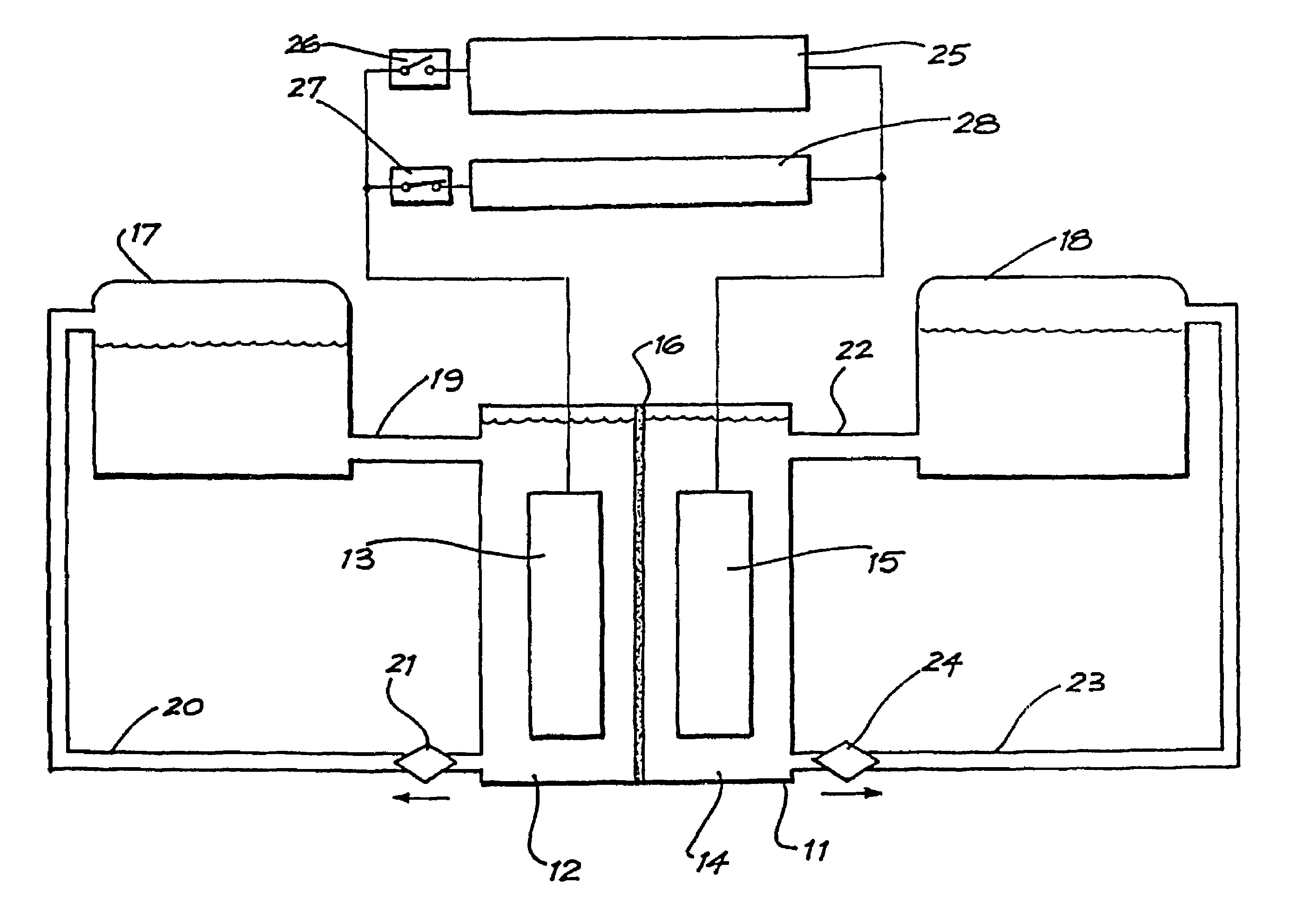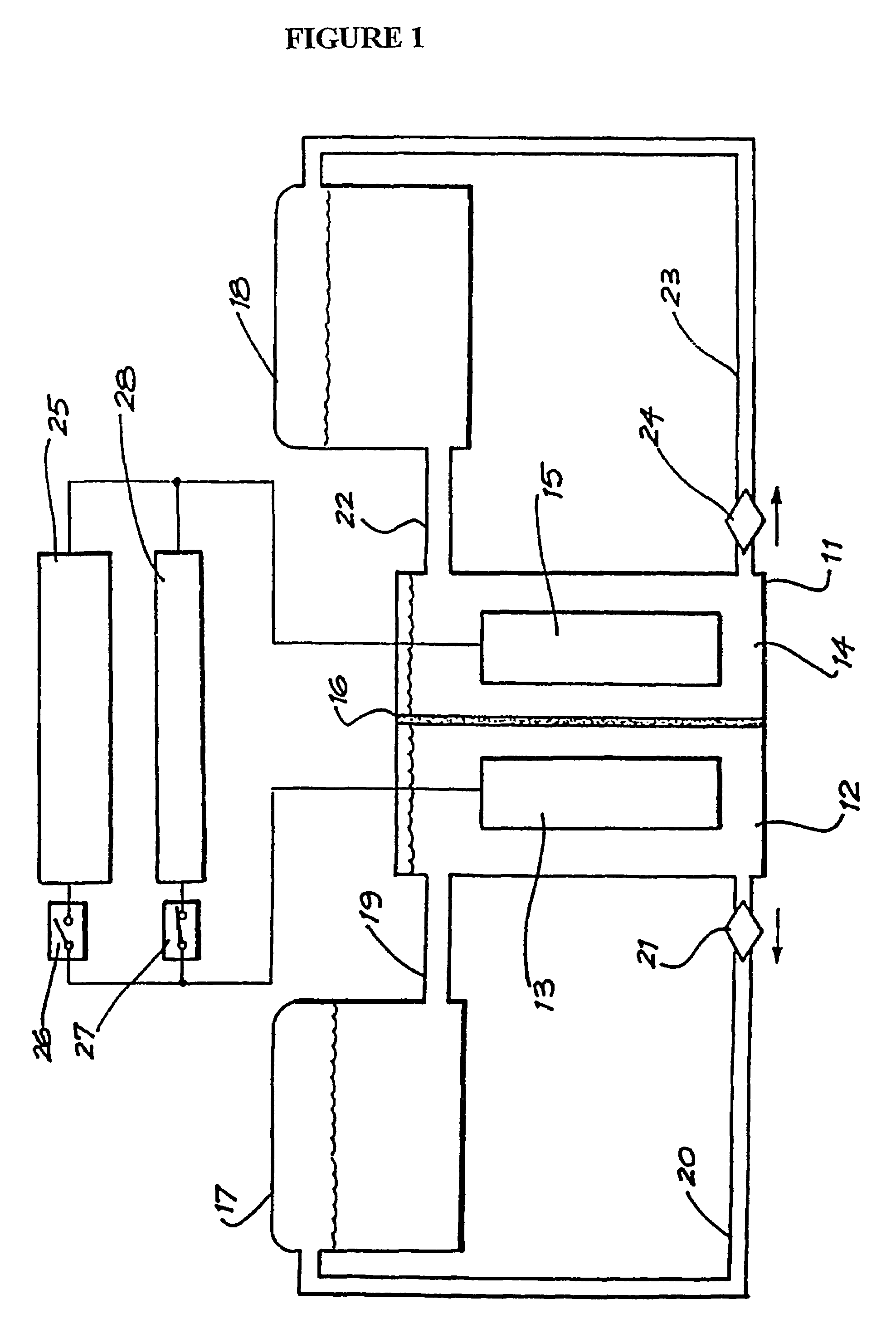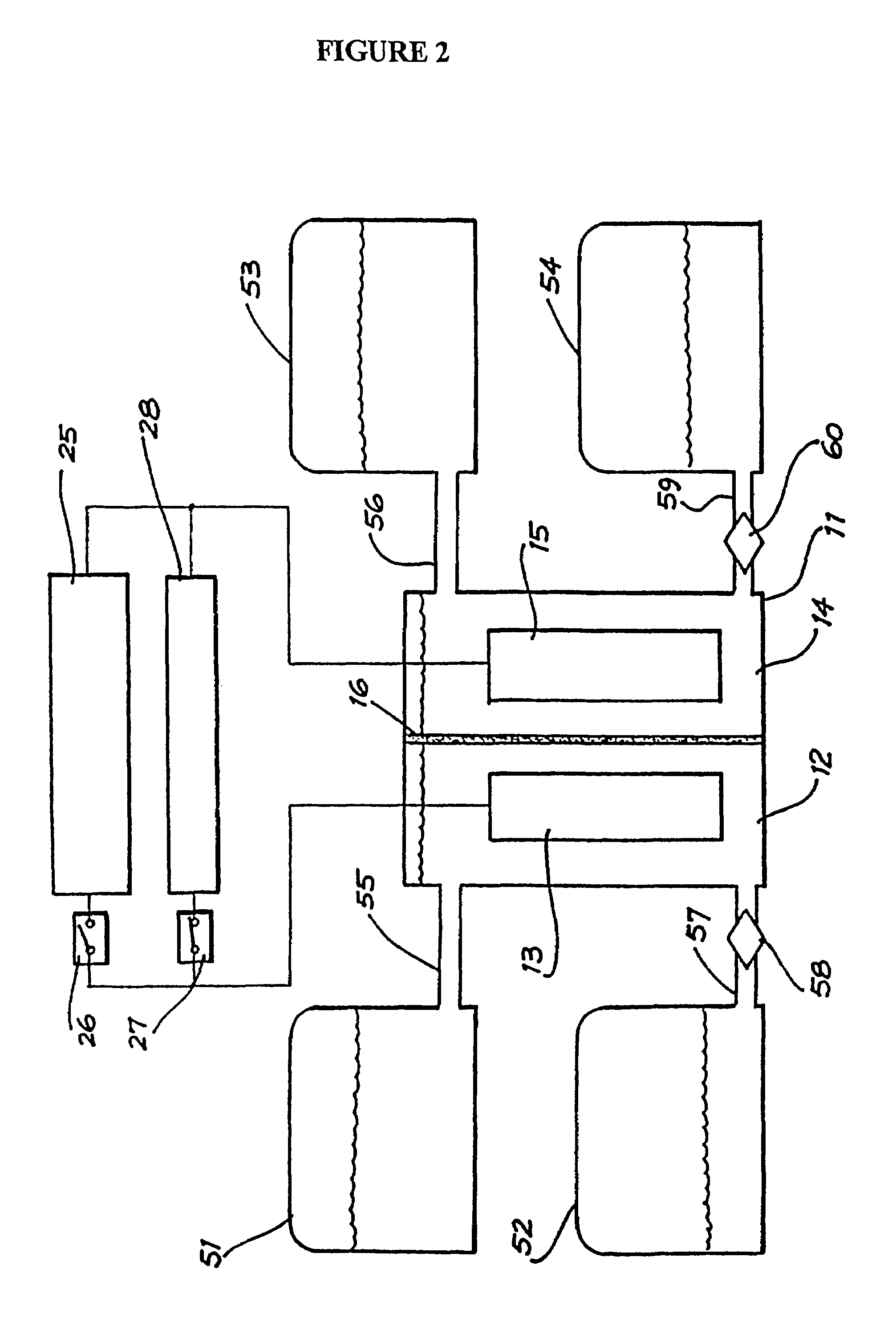Vanadium/polyhalide redox flow battery
a technology of redox flow cells and polyhalide, which is applied in the direction of indirect fuel cells, non-aqueous electrolyte cells, cell components, etc., can solve the problems of limited application in some fields unsuitable use of aqueous hydrochloric acid, etc., and achieve the effect of reducing potential cross-contamination
- Summary
- Abstract
- Description
- Claims
- Application Information
AI Technical Summary
Benefits of technology
Problems solved by technology
Method used
Image
Examples
example 1
[0061]Experiments were conducted to examine the electrochemical reversibility of the V(III) / V(II) redox couple in different concentrations of chloride ions in aqueous HCl.
[0062]FIG. 3 shows a series of cyclic voltamograms obtained at a graphite electrode in solutions containing 2.02 M VCl2 in various concentrations of total Cl− ((A) 5.08 M Cl−, (B) 6.68 Cl− and (C) 8.48 M Cl−). The X axis shows the electrode potential in volts versus the saturated calomel electrode (SCE). Increasing the chloride ion concentration appears to shift the peak potentials, but an anodic peak is observed at a potential of around −0.75 V in the solution containing 8.48 M total Cl− ions while the corresponding cathodic peak appears at approximately −1.07. V. The formal potential of the V(III) / V(II) redox couple is thus seen to be at around −0.95V, which is very suitable for use in the negative half-cell of a redox flow battery. Another favourable feature is the absence of any significant hydrogen evolution c...
example 2
[0063]A series of cyclic voltamograms were obtained in aqueous solutions of 0.1 M HCl, 1.0 M HCl+0.27 M NaBr and 1.0 M HCl+2.5 M NaBr. The results are shown in FIG. 4. From the lower curve (1.0 M HCl) it can be seen that scanning the electrode in the positive direction, gives rise to an anodic current associated with Cl2 and / or O2 evolution. No cathodic peak is observed on reserving the scan potential, thus showing no electrochemically reversible products are produced at the electrode surface during the positive scan. However, when NaBr is present in the electrolyte, anodic and cathodic peaks appear in the forward and reverse scans respectively, showing that a reversible redox couple reaction with a formal potential of approximately 0.85 V versus SCE, is occurring at the electrode (middle curve). When the concentration of the NaBr is increased to 2.5 M (top curve), the height of the anodic peak increases significantly, showing that the Br− ions are in fact oxidised at the electrode ...
example 3
[0066]A redox flow cell according to the present invention was prepared using glassy carbon sheets as the current collectors and graphite felt as the electrode material in both half-cells. A piece of Nafion 112 membrane was used as the ion exchange membrane between the two half-cells and 50 mls of each of the two half-cell electrolytes was placed into the two half-cells. The electrolyte in the negative half-cell was 1.5 M aqueous HCl containing 1 M VCl3, while the electrolyte in the positive half-cell was 1.5 M aqueous HCl containing 1 M NaBr. The solutions were pumped through the cell and a charging current of 20 mA / cm2 applied. When the cell voltage began to increase rapidly, the charging current was switched off and the cell allowed to discharge at a current density of 20 mA / cm2. FIG. 5 shows the plot of cell voltage versus time obtained for the full charge discharge cycle. From this plot, coulombic and voltage efficiency values were calculated as 83% and 80% respectively.
PUM
 Login to View More
Login to View More Abstract
Description
Claims
Application Information
 Login to View More
Login to View More - R&D
- Intellectual Property
- Life Sciences
- Materials
- Tech Scout
- Unparalleled Data Quality
- Higher Quality Content
- 60% Fewer Hallucinations
Browse by: Latest US Patents, China's latest patents, Technical Efficacy Thesaurus, Application Domain, Technology Topic, Popular Technical Reports.
© 2025 PatSnap. All rights reserved.Legal|Privacy policy|Modern Slavery Act Transparency Statement|Sitemap|About US| Contact US: help@patsnap.com



